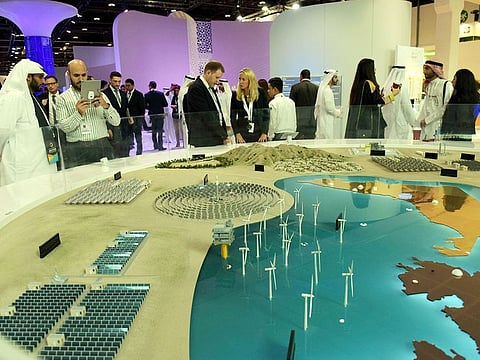How to save water in the workplace
With sensible usage companies can cut down bills and contribute to universal access

In the Middle East, the consumption of water per person is quite high compared to the global average despite being one of the most water scarce regions in the world. There is no doubt that this level of usage is unsustainable. To manage this apposition and the resulting gap between available water supply and demand, there must be clear solutions and tangible plans — the same as those set by the United Arab Federal Electricity and Water Agency. They suggested that the country should cut down its water usage to 40 per cent of the current figure to reach a sustainable level that can be maintained. A clear goal that can be achieved and an ambitious plan that requires all residents to collaborate and play their part. Individuals, companies and institutions must play their role in reducing water consumption and wastage. With companies, this can, in fact, affect their bottom line because sensible water usage cuts down the company’s utilities bill, all while substantially contributing to the wider agenda of achieving local, regional and universal access to water.
Here is a plan for firms to conserve water and to start 2019 on a positive note.
Be aware: To reduce water consumption in the workplace, you first need to know where you’re starting from. Invest in water meters and track how much water is being used over a period of a month or two. If you have capacity for slightly more spending, a water audit can hold huge value. This is a way to monitor the various ways water is being used in your workplace, offering results that can guide your water conservation planning.
Analysis and planning: Use the information you collected about water usage to put together an attainable plan. Identify areas where water is being used inefficiently, set an achievable target for reducing consumption and formulate a realistic plan for how this can be achieved. Start with short term goals and work your way up.
Education: Engage with your employees and launch your scheme with a workshop or a seminar where you explain why it is important to save water and outline your goals and your plan. Your people must be on board and ready to affect change for change to be successful and a proper understanding of the initiative will help water conservation become part of workplace culture. You may wish to elect someone to oversee the initiative and host brainstorming meetings to source innovative ideas — the people consuming water at the workplace are likely the best to suggest how to save it.
Ensure staff remain engaged and conscious of the reasons and methods for saving water and when new employees join the company, make sure they are made aware of the initiative in their induction, or in the staff handbook.
Washroom fittings: If your workplace is an office, the most obvious place to save water is probably the bathroom. In an ideal world, all toilets would be replaced with environmentally friendly models with dual flush cisterns and all taps would be low-flow and sensor operated, but this isn’t feasible for every company. Retrofit options are a great way of improving the efficiency of older models of toilets. Displacement products and early-closing toilet flappers both reduce the amount of water used with each flush. and dual-flush conversion devices are great for improving the functionality of single-flush toilets.
Regular checks are necessary to make sure all fittings remain efficient — a leaky tap can waste up to 20,000 litres of water a year!
Kitchen habits: From washing up in a bowl of soapy water rather than under a tap, to scraping dishes rather than rinsing them — the kitchen is where little changes mean the most. Encourage staff to get into good habits using short reminders or through creative challenges. If you have a dishwasher, make sure it’s only put on with a full load. Most dishwashers have an ‘eco-cycle’ option which uses less water, the same goes for washing machines.
Cooling and cleaning in the office: Have a think about your workplace’s cleaning schedule — do the floors really need to be mopped every day? Sometimes all it takes is a good sweep. In the Middle East, air conditioning, heating and ventilation has a huge market demand. AC units/chillers can be fed using treated wastewater instead of fresh water from network. Moreover, on hot, humid days, large, commercial AC units can generate up to 1,900 litres of water in condensation! This usually wasted water can instead be collected and channelled into uses that don’t require perfectly fresh water such as irrigation or outdoor cleaning.
Landscaping in the garden: While tending green space and landscaping might be a great way to reuse wastewater, it might be worth considering watering plants and grass before 8am or after 6pm — this minimises the amount of irrigation water lost as evaporation.
Maintenance: Once you’ve implemented all these changes, make sure they don’t go neglected. Take regular meter readings to ensure your workplace is on track to meet its targets and keep the dialogue about water conservation flowing so staff remain engaged with the initiative. Keep introducing new ideas and celebrate when you achieve targets — saving water is a win win for everyone; your company, yourself, your surrounding and the environment we share on this planet!
Fady Juez is managing director at Metito, a global provider of intelligent water management solutions.
Sign up for the Daily Briefing
Get the latest news and updates straight to your inbox



